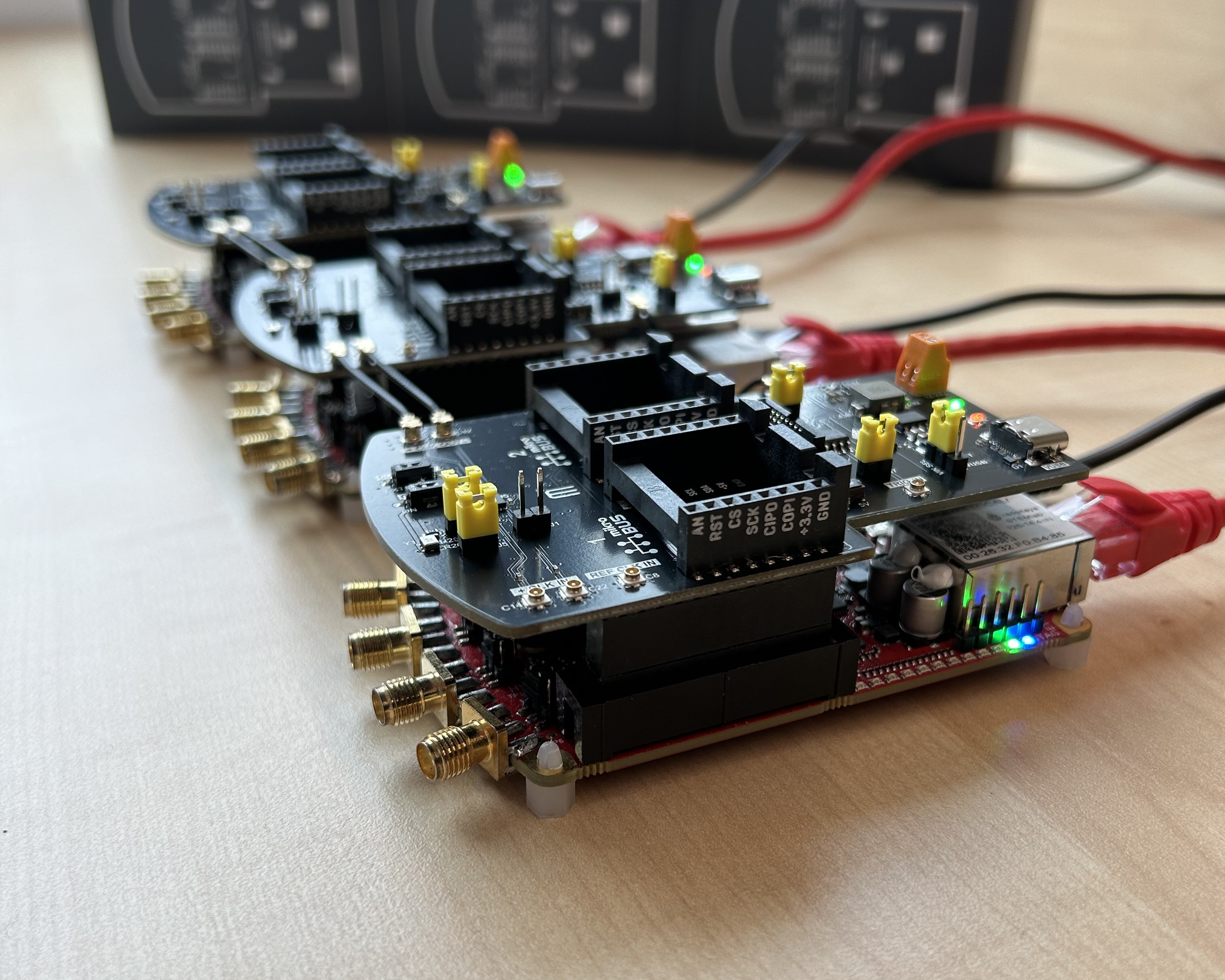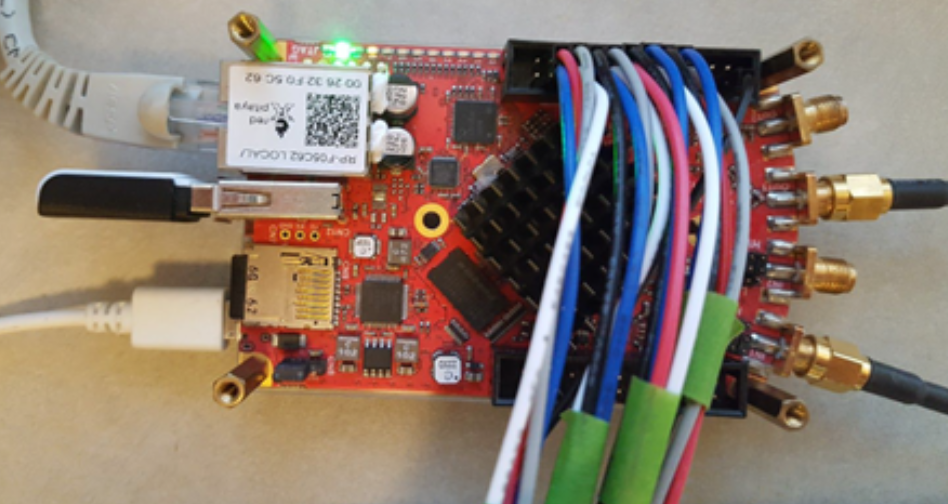Red Pitaya’s Split Trigger Mode: Precision Data Acquisition, Channel by Channel
- Posted by
 Red Pitaya Team
, May 29, 2025
Red Pitaya Team
, May 29, 2025
.jpg)
In this article, we’ll introduce Red Pitaya’s new split trigger acquisition mode, but first let’s review signal acquisition on these versatile and affordable boards.
Red Pitaya signal acquisition
Data acquisition is the process of sampling real-world analog signals and converting them into digital samples that can be stored and manipulated by a computer. There are many different types of data acquisition, but when discussing electrical signals, we distinguish between continuous and burst data acquisition.
- Continuous data acquisition – a continuous stream of data from the inputs of the data acquisition unit to a file on a computer, covered by the Red Pitaya streaming application.
- Burst data acquisition – data is captured into data buffers. When a buffer is full, the acquisition stops, and the data can be extracted from the buffer. Afterwards, the data acquisition can be restarted. This is the default data acquisition mode on a Red Pitaya board.
Burst acquisition typically has some dead time between the acquired data buffers, as data is not captured until the acquisition is restarted.
When using burst data acquisition, we want to start acquiring data at a specific moment, when the input signal meets certain conditions. We call this the triggering moment. It is defined by the following parameters:
- Trigger level – input signal voltage level
- Trigger front – usually positive (rising) or negative (falling)
- Trigger channel
Data acquisition starts the first time the input signal meets the conditions.
Under normal circumstances, a Red Pitaya board has a single trigger condition for all input channels, resulting in synchronous data acquisition on all channels. Once acquisition is started and the trigger condition is met, data from each channel is captured into a separate 16384 sample circular memory buffer. The trigger position within the memory buffer is at a random sample within the circular buffer

Half of the samples are taken before the trigger and half are after. The circular memory buffer is then converted into a 16384-sample data buffer with the trigger position in the middle of the buffer (at the 8192nd sample). By changing the trigger delay parameter, we can either capture more data before the trigger event (negative trigger delay) or capture more data after the trigger event (by specifying a positive trigger delay). The situation is illustrated below:


It is important to distinguish between the circular memory buffer and the data buffer. Most of the Red Pitaya SCPI and API commands refer to the data buffer and its position, but there are commands that refer to the position within the circular memory buffer.
Split trigger mode
When enabled, the split trigger mode separates the single trigger for all input channels into one trigger per input channel. This allows us to specify a trigger condition for each input channel and acquire the data independently of the other channels, which is important in applications where we want to acquire data from multiple independent sources.
Split trigger mode affects several other acquisition settings, where the acquisition parameters must be specified for each channel, rather than setting all channels with a single command.
Data acquisition for each channel follows the same principles as described in the previous section. The split trigger functionality also applies to the deep memory acquisition mode.
The split trigger mode is currently only available on the STEMlab 125-14 4-Input board with Red Pitaya OS versions 2.05-37 and above. Future OS releases will extend this functionality to other models.

.jpg?width=767&name=blog%20featured%20image%20(82).jpg)
.jpg?width=767&name=blog%20featured%20image%20(81).jpg)
.jpg?width=767&name=blog%20featured%20image%20(80).jpg)

